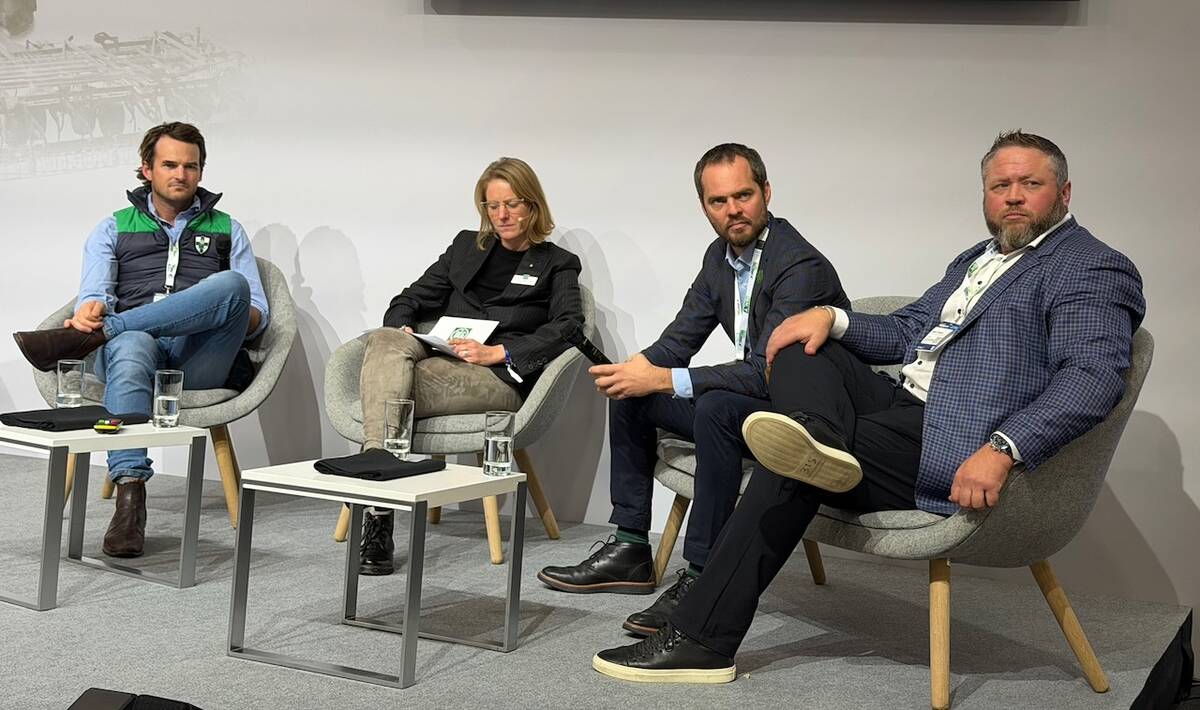Canadian International Grains Institute | The organization finds new path after the single desk
Clayton Friendly of Delia, Ala., jumped at the chance to attend a Canadian International Grains Institute course in Winnipeg in February.
He had known about the institute for years, since his father attended a course.
The opportunity also enticed Glen Lefley of Grosse Isle, Man., even though he had never heard of the organization based less than 20 kilometres from his farm.
Both left the rejuvenated Combine to Customer course energized and pleasantly surprised by their up-close encounter with the throbbing heart of Canada’s grain trade.
Read Also

Agritechnica Day 2: The future of tractor power, building quicker crop apps and large farms and tech
Agritechnica Day 2: The future of tractor power, building quicker crop apps with Syngenta and large farms and tech
“I’ve had my eyes opened up. I didn’t know what this was about,” said Lefley, a grower of identity-preserved wheat who was offered the CIGI course by his customer, Paterson Grain.
Friendly is a member of the Alberta Wheat Commission and took advantage of the course to bone up on the internal workings of the Canadian grain industry, something he thinks is vital in the post-CWB monopoly era.
“They really expose you to the raw opinions of industry specialists,” said Friendly.
“It’s such a transparent kind of an agency, as far as telling the core values of the way people look at agriculture.”
Positive comments like these are music to the ears of CIGI executive director Earl Geddes, but more than just boosting the institute’s ego, the feedback seems like proof that the agency’s transformation from CWB-based to farmer and grain industry-based is working.
“It’s worked exceedingly well,” Geddes said about the new course formation process, in which two committees tell CIGI what courses and training it thinks it should offer and then review the ideas that CIGI develops.
CWB dominated CIGI programming during the monopoly era, but the courses are now broadening their focus and engaging a wider array of companies, organizations and farmers.
Geddes said pulses and canola are getting a higher profile within the courses, even though a heavy pulse element had been developed at CIGI during the CWB-dominated era. The organization built a pulse milling and assessment section a few years ago, but now there’s even more interest from farmers on developing this capacity.
“Within this building there’s a wealth of knowledge,” said Friendly, who calls peas the “shining gem” of his own farm, after seeing the pulse processing floor.
Geddes said CIGI’s biggest problem has been underestimating how much interest there would be in its training abilities. It has had to delay a couple of open, public courses it was going to offer because it had so much demand from companies to do company-specific, private training.
“We’re seeing a lot of that type of activity,” said Geddes.
Many companies, from life science to processors to merchants and marketers, can’t afford to build their own training facilities to this level, so they are turning to CIGI to do the work.
Geddes said he has been pleased to see farmer interest stay high even without CWB’s backing and promotion, and hopes it has successfully managed the leap from one structure to another.















